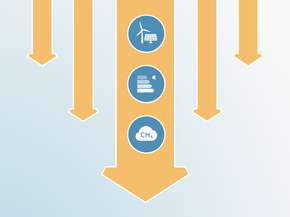Country summary
Overview
Ethiopia’s National Determined Contribution (NDC) is one of the few the Climate Action Tracker rates as “2°C compatible.” The “2°C compatible” rating indicates that Ethiopia’s climate plans are within the range of what is considered to be a fair share of global effort but are not yet consistent with the Paris Agreement.
Ethiopia aims to increase power generation capacity by a considerable amount, mainly through several large hydropower schemes. Their success is in doubt after controversy about sustainability, including the challenge of mitigating the considerable downstream effects on neighbouring countries. Beyond satisfying its own growing demand, Ethiopia aims to become an exporter of electricity, which would require investment in an extensive distribution grid.
Ethiopia’s NDC would lead to a reduction of at least 64% below the Ethiopian business-as-usual (BAU) scenario by 2030, when emissions including LULUCF are projected to reach 400 MtCO2e. The corresponding GHG emissions reduction target for 2030, excluding LULUCF, is 40% below BAU, or 185 MtCO2e, which is the emissions level used to rate the emissions reduction target. Full implementation of the NDC is conditional on finance, technology transfer and capacity building support under the framework of Ethiopia’s Climate Resilient Green Economy Strategy (CRGE) strategy, which is integrated in its national development plan GTP II (Second Growth and Transformation Plan). There is currently limited information available regarding the progress of GTP II.
The mitigation efforts will focus primarily on the forestry sector, which is expected to contribute with a reduction of 130 MtCO2e. The forestry sector, however, is not included in our rating as it is difficult to analyse it with effort sharing approaches (due to data uncertainty and dependency on country-specific circumstances). Ethiopia intends to use international carbon credits to meet its target.
Ethiopia’s NDC is based on the Climate Resilient Green Economy Strategy (CRGE) strategy, which is integrated in its national development plan GTP II (Second Growth and Transformation Plan). If policies are successfully implemented, the NDC target could be achieved in 2030. Uncertainty remains on the effectiveness of current policies in place, which is reflected in a range of current policy projections.
Further analysis
Latest publications
Stay informed
Subscribe to our newsletter




